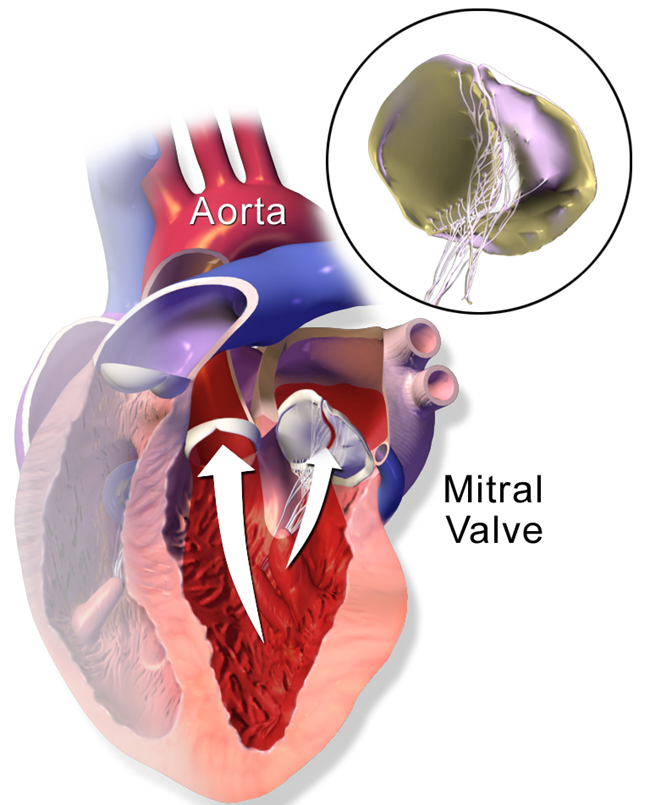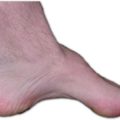Anatomy of the Heart
As everyone knows, the human heart has four chambers. The two upper chambers are the atria and the two lower ones are the ventricles. The left atrium receives oxygenated blood from the lung and passes it into the left ventricle through the mitral valve. The left ventricle then pumps oxygenated blood through the arterial system, delivering nutrients and oxygen to the entire body. The deoxygenated blood goes into the venous system and a central venous channel known as the inferior vena cava delivers this blood into the right atrium. The right atrium passes the venous blood through the tricuspid valve into the right ventricle which then pumps the blood to the lung where oxygen is extracted from the air to oxygenate the blood, thus completing the circulation.
Understanding the Heart Valves
The mitral and tricuspid valves have been described as “watch pocket” valves because their construction reminds us of the kind of pocket in the waistcoats of gentlemen that were used for carrying a watch. They are made of tissues that respond to the increasing pressure caused by the contraction of the ventricles, thus closing the respective apertures between the atria and the ventricles. It is not too difficult to imagine that the pressure generated particularly in the left ventricle is enormous, thus producing “wear and tear” on the tissues that make up the mitral valve. However, it is not that simple and we shall see in this post why mitral valve prolapse is surprisingly common and how it affects health. Prolapse means that the valve is not closing properly. This is because degeneration has occurred in one of the leaflets of the valve and it prolapses into the atrium as the pressure in the ventricle increases. This causes regurgitation of blood from the ventricle to the atrium.
Mitral Valve Prolapse: Incidence and Sex Distribution
Mitral valve prolapse (MPV) is the most common condition affecting the heart valves. Some studies show that it affects 2-3% of all women. It is interesting that it is diagnosed in young women, but the incidence decreases markedly in older women. This decrease in incidence is not seen in the male population which is consistent in both young and old men. As the result of a large study known as the Framingham study, the incidence of MPV is known to affect equal numbers of men and women. The cause for the difference in age distribution in women is unknown. Occasionally, MVP is associated with other heart conditions but it is generally considered that these diseases would have been present with or without MVP. The outcome differs for men and women. Recent studies have indicated that, for men, the requirement for surgical intervention to repair the valve is higher than for women and increases with age.
Mitral Valve Prolapse and Dysautonomia
Patients with MVP frequently have chest pain of undetermined cause. In 1975, 23 patients with deformity of this valve underwent metabolic studies. Chest pain occurred in five of these patients while being tested and in 2 patients a change in the electrocardiogram indicated myocardial ischemia. Lactate (lactic acid production in tissues is related to energy metabolism) abnormalities were reported in 30% of these patients, indicating abnormal metabolic changes. As early as 1979 it was recognized that MVP was associated with defective function of the autonomic nervous system (ANS). It will be remembered that the ANS is automatic and is the nervous system by which the lower part of the brain exercises control over body organs. This introduces a complex association that begs explanation.
In 1994, it was reported that recent research had shown that subsets of patients with MVP had a number of related symptoms that included fatigue, heart palpitations, chest pain, exercise intolerance, breathlessness, dizziness, headache, sleep disorders, gastrointestinal disturbances, cold extremities and panic attacks, classified as MVP syndrome. The lack of a proven cause-and-effect relationship between MVP and panic disorder does not diminish the clinical significance of the high rate of co-occurrence between the two conditions. In 1991, it was suggested that the nonspecific symptoms “with no discernible objective cause who fail to respond to medication” should be ascribed to panic disorder as a possible explanation for symptoms. This illustrates that this polysymptomatic disorder with an unknown explanation and little or no laboratory evidence is often ascribed erroneously to psychosomatic symptomology.
Increased activity of the sympathetic branch of the ANS has been reported in association with MVP, promoting “myxomatous degeneration” in the mitral valve. This branch of the ANS is the system that promotes brain/body action and has a high energy consumption. Sleep apnea, a common disease, is associated with repeated episodes of hypoxemia (reduced blood oxygen) and is considered to be the primary stimulus for sympathetic over activity in these patients.
Hypoxia and Pseudohypoxia
The prevalence of MVP was found to be significantly higher in people living at moderate altitude compared with those living at sea level. The difference is because of the decrease in oxygen concentration in the air. A common disorder occurring at altitude in people that are often regarded as being “unfit” is mountain sickness. Postural phenomena, cardiac arrhythmias and autonomic dysfunction are responsible for pre-syncope (dizziness) and syncope (short passing out spells) in patients with MVP. Of some interest, evidence has been reported that hyperglycemia (high blood sugar) as might be found in a poorly controlled diabetic, produces cellular chemical changes, mimicking the effects of hypoxia on vascular and neural function. This effect has been referred to as pseudohypoxia. The resulting dysfunction in cellular metabolism and accumulation of pyruvate and lactate during thiamine deficiency has been referred to as pseudohypoxia. Low levels of magnesium were found in the blood of some children with MVP and a five week treatment with magnesium chloride decreased the incidence of chest pain. In 1980, 7 patients with neurologic and cardiologic abnormalities in association with MVP were studied. Abnormal muscle biopsies revealed a peculiarity known as “ragged red fibers” (a characteristic of staining for histological examination). The manuscript was later withdrawn, but serum alanine and pyruvate levels were abnormal and clearly showed evidence for thiamine deficiency. “Ragged red fibers” in muscle have been shown to be the result of thiamine deficiency in an animal study.
Oxygen Deprivation and Mitral Valve Prolapse
It appears that some form of deprivation involving inefficient oxygen metabolism is well established as a constant relationship with the incidence of MVP. In order to affect 2-3% of women, the underlying cause must be common. Its polysymptomatic association is clearly produced by inefficient mitochondria that should certainly be recognized for what it is rather than proposing psychologic dynamics. In the large number of patients whose cases I experienced in my practice, with proven thiamine deficiency, I was often puzzled by a complaint of chest pain. It was almost invariably over the left side of the upper chest, reportedly in most cases to be intermittent and disappeared after treatment with thiamine. Because thiamine deficiency was invariably associated with evidence of dysautonomia, I had concluded that this chest pain, sometimes referred to as pseudo-angina, was in some way related to dysfunctional activity of the autonomic nervous system.
We may be making a common mistake by making the wrong associations. The underlying cause of panic attacks, chest pain and all the other symptoms recorded in MVP syndrome are really the result of poor oxidation (pseudohypoxia) similar to oxygen lack (true hypoxia). Oxidation is the consumption of oxygen in the synthesis of cellular energy. Therefore I am proposing here that the reason for the common appearance of MVP syndrome is because of the massive ingestion of sugar throughout the population. This induces an imbalance between the carbohydrate calories and the availability of vitamins involved in their oxidation, particularly thiamine. The symptoms recorded in MVP syndrome are exactly the same as those recorded in beriberi, known for years as the thiamine deficiency disease. Perhaps the reason for an age discrepancy in the diagnosis of MVP in women is a lesser degree of sympathetic nervous system over activity with increasing age.
We Need Your Help
More people than ever are reading Hormones Matter, a testament to the need for independent voices in health and medicine. We are not funded and accept limited advertising. Unlike many health sites, we don’t force you to purchase a subscription. We believe health information should be open to all. If you read Hormones Matter, like it, please help support it. Contribute now.
Yes, I would like to support Hormones Matter.
BruceBlaus, CC BY-SA 4.0, via Wikimedia Commons.
This article was published previously on July 4, 2018.















This is an answer to Michael Mathieu. Yes, I have indeed seen MVP remit with vitamins that include thiamin. MVP is usually the result of myxomatous degeneration of the valve. I strongly suspect that it is the result of oxidative energy deficiency.
Dear Dr. Lonsdale,
A new client just shared with me that they have a history of mitral valve prolapse and the doctors are wanting to do surgery. I told him that he might possibly have a vitamin B one deficiency. I have your book but I just did a quick search on the Internet and found this article easily and wanted to thank you for your book and this article which is an easy read for most lay people It’s really A great resource to have your article so easily available that I can share it with a Client for their education. It makes my work easier and Your credentials and years of experience give my words more credibility!
But I can’t remember if you had any clients in your practice who you were able to avoid the necessity of mitral valve prolapse surgery by supplementing vitamin B one and magnesium?
Sincerely,
‘Michael
Yes, I have seen MVP remit after treatment with vitamins that include thiamin. MVP is the result of myxomatous degeneration in the valve and I strongly suspect that it is caused by defective energy metabolism
I am currently taking 175 mg of thiamine daily…would a person with POTS/MVP need a higher dose?
Dr. Lonsdale, I was diagnosed with Dysautonomia with mitral valve prolapse many years ago at an Alabama clinic that specializes in it. Anyway I live near Cleveland and would like to see a Dr. here that knows about this. Any suggestions? I recently went to hospital for what they think was a TIA. But all tests coming up negative.
Dr Lonsdale: since I used a high potency TRANSDERMAL B vitamin cream 16 months ago I have air hunger and night time heart racing. My oxygen levels show 96-98 on the pulse oximeter so this is obviously Pseudohypoxia.I used 4 days of cream then crashed, was flooded with adrenaline.
Could taking high amounts of the other B vits put a higher demand on B1?
I have autonomic dysfunction, Pots etc. I am still trying to work out what I did to cause this. Only thing mentioned to me thus far is B2 deficiency because it is needed to process the other B vits.
Try using Lipothimamine which is absorbed more easily than other derivatives. You can get it online.
Also another question, when taking thiamin orally, do you recommend taking it all at once or spread out throughout the day.
In a weird way I was kind of thinking of it as starting a lawnmower, if you give it a half ass pull it will never start no matter how long you do it, but if you give it one good hard one it will start. A clever analogy but I have no idea if that makes any biological sense.
One dose a day
Hey Derrick, does Potassium plays a role with cellular oxidation and ATP synthesis?
Is there a reason you suggest sodium potassium aspartate instead of just a normal magnesium supplement?
Sodium and potassium work in a reciprocal pattern in a highly technical relationship in cell membranes